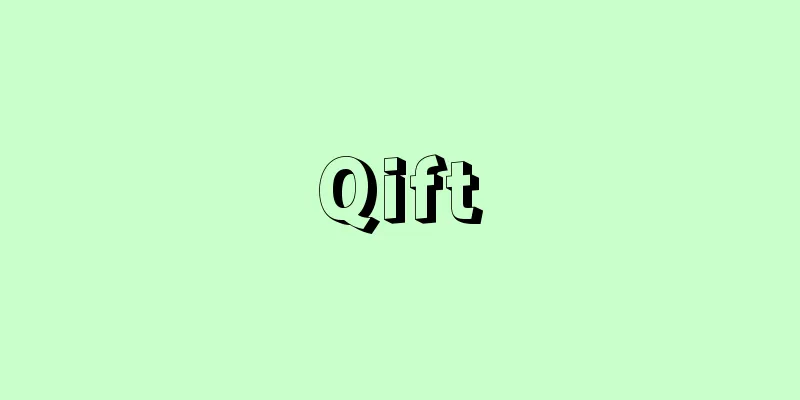Arakinomiya - Funeral Palace

|
In ancient times, it was a place where the body of a nobleman was laid to rest for a while before being buried. It was also called "Mogari no Miya". Until the funeral, breakfast and dinner were offered to the deceased, just as they had done when they were alive, and magical singing and dancing were performed to calm the soul. It declined due to the 646 edict on simple funerals and the influence of Buddhist funeral rites and cremation, and was not built after Emperor Genmei. Source: Obunsha Japanese History Dictionary, Third Edition About Obunsha Japanese History Dictionary, Third Edition |
|
古代,貴人の遺体を葬る前にしばらくの間安置しておく場所 「もがりのみや」ともいう。葬祭までは生前と同じく朝夕の食膳を供え,呪術的歌舞を行って霊魂をしずめた。646年の薄葬令や仏教の葬送儀礼・火葬の影響で衰え,元明天皇以後造られなくなった。 出典 旺文社日本史事典 三訂版旺文社日本史事典 三訂版について 情報 |
>>: Arachidonic acid - Arakidonsan
Recommend
Silvicapra grimmia (English spelling) Silvicapragrimmia
...Some species have stripes on their backs. Seve...
Akimoto Sakanoue - Akimoto Sakanoue
A Myoho-ka (legal scholar) from the end of the He...
Apartheid - Apartheid (English spelling)
Afrikaans (the official language of the Republic ...
European Council
…the collective name for the three supranational ...
Epimedium cremeum (English spelling)
…[Nitta Aya]. . . *Some of the terminology that m...
hoketus
...The Japanese and North American Indians consid...
"Yesterday, today, tomorrow" - Yesterday, today, tomorrow
…He entered the film industry in 1927 and became ...
International Language - Kokusaigo
A language is used for communication between ethn...
The Tale of Genji
A long fictional story written by Murasaki Shikib...
scoparone
...Also, Artemisia capillaris, Artemisia umbellat...
Snow gum (English spelling)
...Dense riverine forests of red gum (Eucalyptus ...
Gilberto, J.
...A new form of samba that was born in Brazil ar...
Rhododendron ripense (English spelling) Rhododendronripense
…[Yoshiharu Iijima]. … *Some of the terminology t...
Ouzui - Ouzui
...Okyo's school played an active role in the...
materia medica (English spelling)
...A branch of pharmacy that studies the relation...









